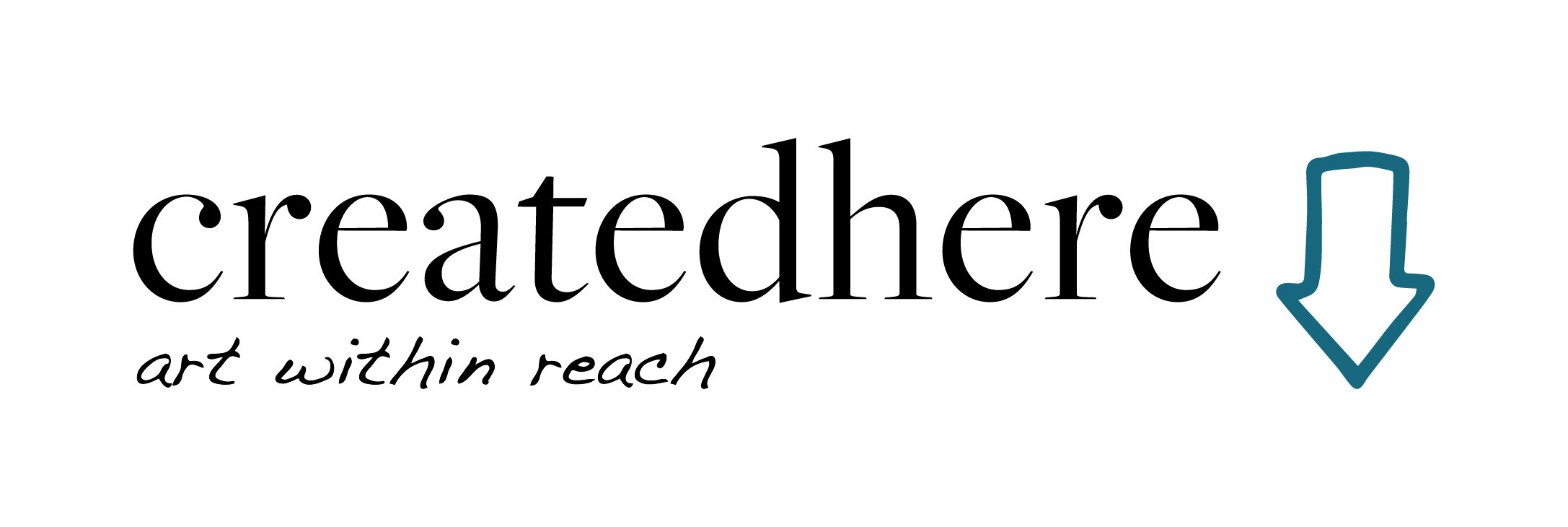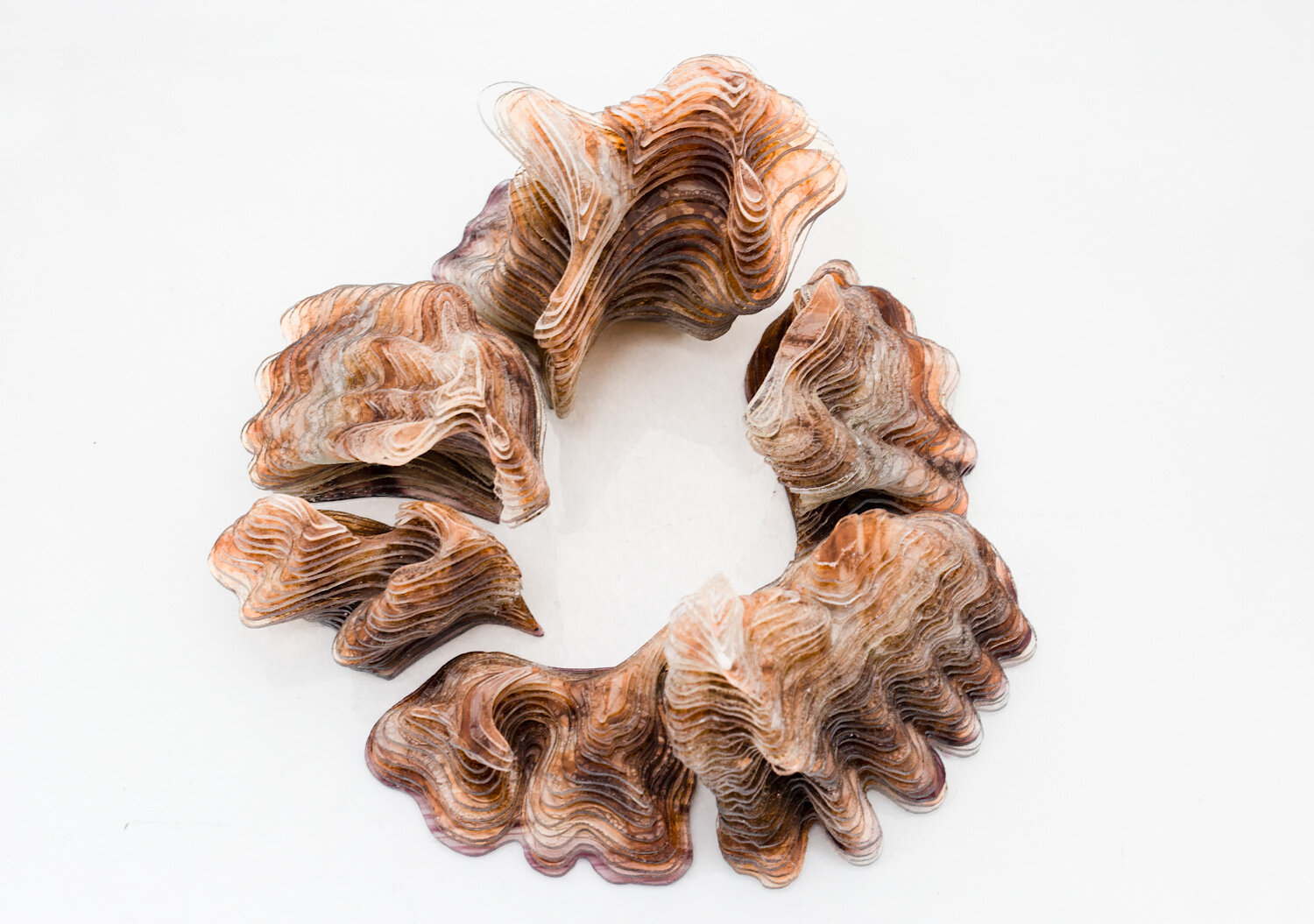Art Elevates: Fundy National Park | Victoria MacBeath
Sheryl Crowley | Release-1 | Photography by Sarah Sarty
Inspiration seems to be a quality inherent of Fundy National Park, in the same way that it is filled with fog and stone. It is a place that I, like many New Brunswickers, have always been drawn to - enticed by the powerful tides and expansive forests.
Community and cultural initiatives crop up alongside wild spaces such as this. The park seems to be a lightening rod for creative thought. It is a place that makes and remakes itself with the churning of rock and the chiseling of water, bringing the enormity of nature into sharp relief. It’s no surprise that artists have long tapped into the beauty and strength of this amazing place.
Albert County has a rich history of craft culture. Consequently, when Fundy National Park opened in 1950 it made sense to have a handicraft school located there. The School of Arts and Crafts would help establish Fundy as a park worth visiting. [1] Originally led by Dr. Ivan Crowell, the school took inspiration from the Banff Centre for Arts and Creativity to offer an opportunity to make art under the sun.[2]
The summer school workshops varied from day classes to week-long and were for a wide range of skill levels. Courses in weaving, woodworking, candle making and more were offered. People from all over (even Boston and New York) came specifically to participate in these learning adventures.[3]
Alas, enrolment in the summer school declined throughout the 1970s until it was closed in 1985.[4] However, the School of Arts in Crafts was an incredibly important steppingstone in the creation of similar courses offered during the same period in Fredericton. These programs developed over many years into what is today a Diploma-granting institution: the New Brunswick College of Craft and Design (NBCCD) offers an innovative curriculum 80 years in the making.[5]
There has also been a resurgence of artistic programming at Fundy itself since 2000. Today, artists of all backgrounds use this beautiful landscape as inspiration, with an increasing number of programs to support them.
In collaboration with Parks Canada, Craft NB now hosts a biennial residency for their juried members. A group of craftspeople are brought to Fundy to seek Beneath the Surface of the park. They then create artwork inspired by the experience and present it in an exhibition that tours the province.
Allison Green took part in the Beneath the Surface residency in 2016, creating work that reflects the importance of the minutiae of insects in these vast parklands. “Stonefly Study” highlights one of the many small species that call Fundy home and exemplifies that small interactions that can have profound impacts. It was a guided session with a park interpreter, and their enthusiasm for these bugs, that gave Allison the confidence to explore a long-held passion.
Allison Green | Gouache on Birch Panel
Beginning in 1968, successful arts and crafts festivals emerged within Fundy, and new festivals continue to thrive there to this day. The impact of one charitable organization, The Friends of Fundy, grows each year. They are an integral aspect of the art scene of Albert County; many of the cultural events that take place in Fundy would not be realized without their help. Their contributions include The Rising Tide festival, which brings workshops, live music, and other cultural events into the park, and the All Nations Pow Wow, an event celebrating Indigenous artistic practice and culture.
During the summer of 2019, students Emma Delaney and Brookie Martin took part in a joint internship offered by The Friends of Fundy and Mount Allison University. They worked to open The Devil’s Loft. This temporary makerspace in Alma hosted artist talks and encouraged visitors to explore their creativity. The name comes from the old Devil’s Half Acre Trail, where the School of Arts and Crafts once stood.
The pair also worked on their own artistic pursuits throughout the internship. Delaney’s driftwood puppets are inspired by Albert County folk art. They embody the way that many artists coming to Fundy from away have adapted to living and working in this rural space, while remaining true to their artistic practices.
Emma Delaney | Puppet People
LandMarks2017/ Repères2017 is another event of cultural significance for the region. A Canada 150 project, it brought artists into national parks and historic sites across Canada to celebrate Indigenous voices and question official narratives of Canadian history. The Fundy participants came from an open-media course at Mount Allison University taught by Karen Stentaford. This project solidified a relationship between Parks Canada and the Mount Allison University Fine Arts Program that continues to this day with yearly student trips.
Mount Allison student work for LandMarks2017/ Repères2017, like Hailey Guzik’s, speak to the manufactured components of national parks. They are cultural entities, and even the way we walk through them is curated for our enjoyment, much like a gallery space. Hailey states that her work is “highlighting the critical role that trail markers and maps have in setting a prescribed experience for park visitors…”
Hailey Guzik | UpperSalmon
My own experience (as a Mount Allison student in the art history program) is that Fundy National Park is enhanced by these many cultural initiatives. The art that is created in and about Fundy begins to fulfill the Parks Canada mandate of encouraging storytelling and environmental conservation. This inertia could have more weight behind it with improved funding and active awareness of programming gaps.
Though we live in an extremely culturally diverse country, many BIPOC (Black, Indigenous, and People of Colour) voices are still missing. Events like the All Nations Pow Wow are a step in the right direction but more effort is needed to create residencies and other programming dedicated to Indigenous and Black makers. This need is not limited to Fundy.
Furthermore, as the ecological issues of our world become more pressing, the artistic lens can focus our attention. To preserve wild habitats within and beyond the park, we first need to become conscious of their value. Artistic expression and the pursuit of inspiration can be our guide.
- Victoria MacBeath
This research is based on an Independent Student Research Grant project, funded through Mount Allison University, that I worked on this past summer. If you are interested in reading more please check out my webpage: https://victoriamacbeath.wordpress.com/
Victoria MacBeath
Victoria MacBeath is a fourth-year art history student at Mount Allison University. She is passionate about the links between visual culture and environmental activism. When she’s not working on grad school applications, you can often find her chasing sunsets or trying new seasonal latte flavours.
References:
[1] Maynard, Michael Haddon. Passion and Persistence: An inaugural history of the New Brunswick college of craft and design. 2015. The University of New Brunswick. PhD Dissertation. https://unbscholar.lib.unb.ca/islandora/object/unbscholar%3A9284.z
[2] Wall, Karen and Pearlann Reichwein. “Climbing the Pinnacle of Art: Learning Vacations at the Banff School of Fine Arts, 1933–1959.” The Canadian Historical Review, vol. 92 no. 1, 2011, p. 69-105. Project MUSE, doi:10.1353/can.2011.0014.
[3] MacEachern, Alan Andrew. In Search of Eastern Beauty: Creating National Parks in Atlantic Canada 1935-1970. 1997. Queen’s University. PhD Dissertation. https://search-proquest-com.libproxy.mta.ca/docview/304390551?pq-origsite=primo.
[4] Maynard, Michael Haddon. Passion and Persistence: An inaugural history of the New Brunswick college of craft and design. 2015. The University of New Brunswick. PhD Dissertation. https://unbscholar.lib.unb.ca/islandora/object/unbscholar%3A9284.z
[5] Maynard, Michael Haddon. Passion and Persistence: An inaugural history of the New Brunswick college of craft and design. 2015. The University of New Brunswick. PhD Dissertation. https://unbscholar.lib.unb.ca/islandora/object/unbscholar%3A9284.z








